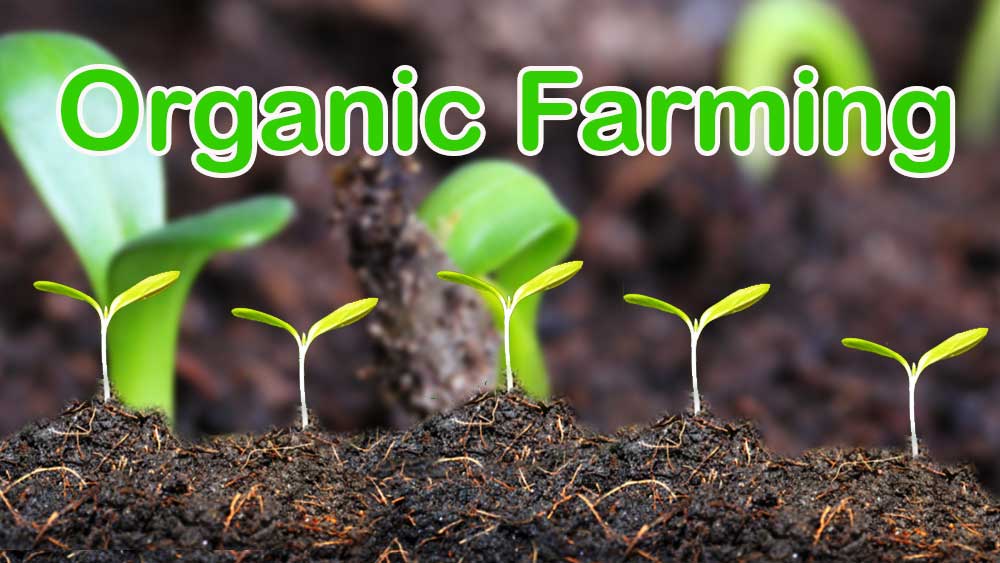Introduction
Greetings readers! My name is Sarah and I am a passionate farmer and writer based in California. As someone who cares deeply about sustainability and environmental stewardship, organic farming has always been very important to me. In this blog post, I wanted to share some of the main organic farming methods that are used, along with the benefits they provide for farmers and their crops.
What is Organic Farming?
To begin, it's helpful to have a working definition of what organic farming actually is. In simple terms, organic farming refers to agricultural practices that promote biodiversity, biological cycles and soil biological activity. Organic farmers do not use synthetic pesticides, petroleum-based fertilizers, sewage sludge, genetically modified organisms, or ionizing radiation. Instead, they rely on natural materials and methods to grow high-quality food without compromising the health of the environment, farmers or consumers.
Specifically, the key principles of organic farming focus on caring for the long-term health of soils, ecosystems and people. Organic management includes techniques like crop rotation, green manures, compost and biological pest control to naturally maintain soil productivity and control pests and diseases over time. Farmers also select appropriate plant and animal species or varieties that particularly suit the local climate and soils. All organic food production must meet government-approved organic standards defined by the Organic Foods Production Act.
Benefits of Organic Farming Methods
Now that we have discussed the overall philosophy behind organic agriculture, let's dive deeper into some of the specific organic farming methods used and how they benefit both crops and soil health.
Crop Rotation
Crop rotation, or deliberately changing the types of crops grown in a field each season, is one of the hallmarks of organic systems. Using a diverse crop rotation schedule brings many advantages. It prevents the buildup of soilborne pests and diseases that attack certain plant species. It also improves soil nutrients as different crops utilize nitrogen, potassium and other minerals in diverse ways. Legumes like alfalfa, clover and beans fix nitrogen from the air and make it available for subsequent grain crops like corn or wheat.
Organic farmers may use clever rotation patterns over 3-5 years that include cash crops, cover crops and forages. This disruption of pest lifecycles through periodic habitat changes is highly effective at naturally controlling problematic weeds, insects and pathogens without synthetic chemicals. Rotating crops also minimizes soil erosion risks compared to continuous monocultures. Overall, diversified rotations are crucial for supporting vibrant soil food webs and productive yields season after season in organic systems.
Cover Crops and Green Manures
Closely related to crop rotation is the strategic use of cover crops and green manures. These are usually fast-growing grasses or legumes planted between cash crops specifically to benefit the soil. As cover crops grow, their roots penetrate deep into subsoil layers and improve structure by adding organic matter. This makes soils less prone to compaction while retaining more moisture. The plants also scavenge residual soil nutrients left after the main crop and prevent leaching by rainfall.
When tilled under as green manures before the next planting, cover crops decompose and release nutrients for crop uptake through natural mineralization processes. This property of “feeding the soil” allows organic matter levels, microbial activity and nutrient-holding capacity to gradually rebuild over time without synthetic fertilizers in a low-input system. Cover cropping also reduces erosion risks between cash crops thanks to its protective groundcover. Altogether, these soil conservation efforts are foundational to regenerative organic agriculture worldwide.
Composting and Mulches
Organic matter is the lifeblood of healthy soil, and composting is the primary way organic farmers actively build soil carbon reserves. On-farm composting stacks two benefits by recycling organic wastes from crops, crop residues, cover crops, manures and household food scraps back onto land. The compost becomes a natural mulch and soil amendment full of microbial diversity, promoting resilience to stressors like drought.
When tilled or dug into soil, compost powers beneficial soil food webs and supplies a slow-release source of major and minor nutrients for high-yielding organic production. Compost’s carbon-rich structure also binds clay particles together, improving soil aggregation and creating an open soil structure with more air pockets. This loose, crumbly texture promotes root growth while resisting erosion and runoff. Compost even helps soils retain and deliver water more efficiently by holding excess capacity in its sponge-like organic pores. All in all, regularly mulching and composting are pivotal organic methods for maintaining long-term soil health and quality harvests.
Cover Crops are also often used directly as in-situ mulches between rows of fruit or vegetable crops. The live or dead plant matter suppress weeds, moderate temperature fluctuations and moisture retention near crop roots. This reduces stress on plants and disruption from cultivation compared to bare soil systems. The cover crop residues gradually weather in place, adding nutrients and organic matter in situ over time.
Integrated Pest Management Strategies
Instead of relying on toxic chemical interventions, organic farmers view pests, diseases and weeds holistically as symptoms arising from systemic imbalances in agroecosystem management. Their solution is a balanced, proactive approach called Integrated Pest Management (IPM). Key IPM techniques include natural habitat creation and conservation, encouraging beneficial organisms, diversifying crop varieties and rotation schedules, and physical/mechanical controls when needed.
For example, planting hedgerows, flowering perennials or beetle banks harboring parasites and predators helps control harmful insect populations through biological means without pesticides. Good sanitation and crop hygiene minimizes conditions favoring disease organisms. Cultivar selection focuses on genetic disease and pest resistance traits to minimize susceptibility and need for reactive controls. These proactive strategies aim to establish ecological balance and keep pest pressures below economic injury levels naturally over the long term.

Animal Manures and Grazing Integration
For livestock farms, animal manures are an excellent organic fertilizer and soil builder when properly composted before application. The decomposed manure contains essential plant nutrients like nitrogen, phosphorus and potassium along with trace minerals. It also stimulates the whole web of soil organisms through its carbon-rich structure and microbiological activity. Composted manures can completely replace synthetic petrochemical fertilizers for organic production systems when applied and incorporated judiciously based on soil tests.
Progressive organic dairies may employ management intensive grazing practices for additional benefits. Rotational grazing allows animals to naturally fertilize pastures with manure while ripping and aerating soils with their hooves. Grazed cover crop aftermath is also trampled into the soil as green manures. This helps recycle nutrients, increases soil organic matter and aggregate stability over time, improving water infiltration and drought resistance around sensitive crops or orchards. Overall, carefully integrating livestock practices optimizes nutrient recycling in closed-loop organic systems.
Benefits of Organic Farming Methods For Crops
In summary, some of the key crop benefits realized through these organic farming methods include:
- Increased soil organic matter content and improved soil structure
- Enhanced nutrient cycling, availability and retention in soils
- Greater water holding capacity, less runoff and erosion
- Reduced susceptibility to pests, diseases and other biotic/abiotic stresses
- Enriched soil biodiversity and activity of beneficial microbes, earthworms etc.
- More resistance to drought stress and climate fluctuations
- Higher yields and nutritional quality optimized for local conditions
- Reduced production costs with biological controls instead of costly inputs
- Crop diversification supporting whole farm income and agrobiodiversity.
FAQs
FAQ 1: How do organic farmers control weeds without herbicides?
Organic farmers have several strategies for managing weeds mechanically and culturally instead of chemicals. Crop rotation disrupts weed life cycles by changing the crops grown each season. Cover cropping smothers weeds with vegetation. Flame weeding, tilling, and shallow cultivation are also used between crop rows while plants are small. Careful timing is needed to avoid damaging crops. Additional options include hand-weeding, which is labor-intensive, and grazing livestock on cover crops to control weeds naturally with mowing. Preventing weed seeds from entering fields in the first place also helps reduce populations over time through good sanitation practices. The goal of organic weed management is preventing problems rather than reactive control.
FAQ 2: How do organic farmers fertilize crops without synthetic inputs?
Fertility in organic systems comes primarily from composting, cover cropping, and animal manures. Compost provides a balanced, slow-release source of major and micronutrients while improving soil structure long-term. Cover crops naturally replenish nitrogen and organic matter when tilled under as green manures. Legumes fix atmospheric nitrogen into soils. Properly managed grazing improves pastures as livestock cycle nutrients. Bone meal, fish emulsion and other approved natural fertilizers supplement as needed. Mulching also encourages soil biological activity to solubilize nutrients efficiently for crop uptake from stable organic matter sources. Precision applications based on soil testing ensure no excess runoff.
FAQ 3: How do organic farmers control pests and diseases without pesticides?
The core organic strategy is prevention through optimizing agroecosystem health and plant resistance. Crop rotation, resistant varieties, balanced fertility and sanitation reduce susceptibility. Habitat creation with hedgerows and groundcover attracts beneficial predators and parasites. Crop diversity spreads risk of total losses. Physical barriers exclude some pests. Pruning improves airflow/sunlight exposure to dry foliar diseases. Traps monitor outbreaks and pheromones confuse mating. As a last resort, approved biopesticides from natural substances like spinosad are sprayed judiciously. Overall, the philosophy is establishing long-term ecological balance over quick fixes.
FAQ 4: Do organic farming methods provide enough yield for commercial viability?
Yields from organic operations can initially be lower as soil health and natural balance develops during the 3-year transition period away from conventional methods. However, long-term research shows yields stabilizing to match or even exceed nearby conventional farms due to improved nutrients, water retention and resilience to stresses under a changing climate. Successful certified organic farmers demonstrate commercial viability through efficiency, value-added products capturing premium market prices to offset lower perceived yields, and pursuing multi-year contracts. With experienced management, organic systems are capable of meeting yield targets economically.
FAQ 5: What impact do organic farming practices have on the environment and climate change?
Adopting organic standards has numerous benefits for environmental stewardship and climate resilience. Increased soil organic matter through composting and cover cropping sequesters atmospheric carbon long-term. Healthy microbial activity also produces beneficial compounds suppressing nitrous oxide, a potent greenhouse gas. Reduced erosion and synthetic inputs protect local watershed quality. Hedgerows and grassed waterways improve biodiversity and usable wildlife habitat on farms. Reliance on renewable nutrient cycling versus fossil fuel dependence for synthetic fertilizers and machinery also lightens the carbon footprint. Overall, organic management helps farms mitigate and adapt to climate change through regenerative strategies.
FAQ 6: What organic certification is required to legally market farm products as organic?
In the United States, any farm with over $5,000 annual organic sales must obtain third-party certification from a USDA accredited agency to use the term "organic" commercially. This involves an application process providing production details, followed by annual on-site inspections verifying compliance with national organic standards for at least three years before certification can be awarded. Certified operations must also keep detailed records of all inputs, practices and transactions for potential auditing. International equivalents like EU or Canadian certification allow legal export marketing. Certification provides transparency for consumers purchasing organic integrity verified through independent oversight.
Conclusion
In conclusion, organic farming embraces holistic techniques optimizing whole farm ecology, soil health, and biodiversity as alternatives to reliance on costly synthetic inputs. When implemented strategically through rotational planning, cover cropping, composting, habitat creation and preventative integrated pest management, organic methods supply commercial agriculture a viable production system. Certified organic production standards also support environmental sustainability and climate mitigation goals through closed-loop nutrient cycling and renewable inputs protecting farmers, consumers and the land for generations to come. With experienced management, organic production demonstrates compatible yields through maximizing ecosystem services and capturing premium market value of certified crops.


